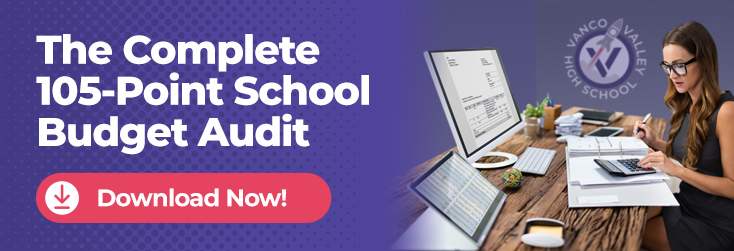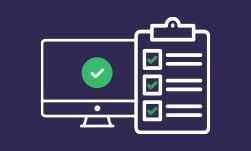
Public school accounting principles are important for everyone involved to understand. While many bookkeeping basics may seem simple or similar to personal budgeting practices, public school finances have a few more rules to follow.
It is crucial that public school accounting and financial reporting is held to the standards of the Generally Accepted Accounting Principles (GAAP) and is compliant with all federal reporting requirements. In this article, we’ll go over the basics you need to know to manage accounting and financial reporting for your public school successfully. From compliance and reporting to budgeting methods, we’ve got you covered.
Table of Contents
- Accounting Principles for Public Schools
- Understanding Revenue in Public Schools
- Expense Management in Public Schools
- Financial Reporting and Compliance
- Budget Preparation for Public Schools
- Key Takeaways
- FAQs
Accounting Principles for Public Schools
These are the main principles you need to know to ensure that your accounting and financial reporting are up to the expected standards. We will go over the GAAP, the role of the GASB, and the difference between cash basis and accrual basis in your practices.
Generally Accepted Accounting Principles (GAAP) in public schools
There are ten main GAAP that it is important for all accounting professionals to follow in their practices. There may be more GAAP that apply in some cases, but for the purposes of public school accounting principles, these ten are likely what you will need to focus on. Here is a quick overview of each one:
- Principle of Regularity. This means that you must strictly follow any established rules and regulations.
- Principle of Consistency. This means that throughout any accounting and financial reporting process, you apply consistent standards.
- Principle of Sincerity. This is about being impartial and prioritizing accuracy above all else.
- Principle of Permanence of Methods. This means that the methods and procedures used for the accounting process will be consistent in the preparation of each financial report. This makes it easier for people to understand and compare the reports.
- Principle of Non-Compensation. This means that everything, positive or negative, should be thoroughly and transparently reported.
- Principle of Prudence. This means that any sort of speculation will not have an impact on financial data reporting.
- Principle of Continuity. This means that the valuation of any assets assumes that the organization will continue operating into the future and can be helpful in maintaining a good balance between district assets.
- Principle of Periodicity. This means that revenue reporting is divided by standardized periods of time. This may be fiscal quarters, fiscal years, or another type of time period that is considered acceptable.
- Principle of Materiality. This means that accounting and financial reporting will fully disclose the monetary situation of the organization.
- Principle of Utmost Good Faith. This means that everyone involved is expected to act honestly and transparently.
While some of these principles may seem like a given, it’s especially important that they are followed in accounting practices. For example, you may expect everyone you work with to act honestly, but when it comes to accounting, it is particularly important that information is completely honest and accurate. Keep these principles in mind to make sure you are generating GAAP-compliant financial statements.
Role of the Governmental Accounting Standards Board (GASB)
The GASB operates under the Financial Accounting Foundation (FAF). The FAF is an independent not-for-profit organization in Connecticut that oversees both the GASB and the Financial Accounting Standards Board (FASB). The main difference between the GASB and the FASB is that the GASB focuses on governmental entities, and the FASB instead focuses on private enterprises, like companies and nonprofit organizations.
The GASB is in charge of establishing, revising, and otherwise maintaining the GAAP as it is applied to governmental funds and entities, which includes public schools. Their work is important to set and maintain the highest quality standards possible for governmental entities accounting in a way that is thorough, inclusive, and comprehensive. Keep an eye out for updates from them to make sure you are always providing GAAP-compliant financial statements.
Cash basis vs. accrual basis accounting in public schools
Cash basis and accrual basis are both accepted accounting methods that track transactions over time. The thing that separates them is when they account for the money involved in certain transactions.
With cash basis accounting, transactions are recorded based on when the money is actually received or removed from an account. These transactions may have been scheduled in advance, taken a few days to process, or otherwise had different timing, but with cash basis accounting, they are only tracked when the money actually moves.
With accrual-based accounting, transactions are recorded based on when they are initiated, regardless of when the money is actually received or removed from a given account.
While these methods are both accepted, it’s important that you choose one and stick to it to ensure that your reporting is consistent, accurate, and easier to understand. Depending on your state and the size of your school, you may get to choose between them based on your preference, or you may be required to use accrual-based accounting. Check your local and state laws to ensure compliance with their accounting requirements.
Understanding Revenue in Public Schools
Revenue for public schools can look very different than revenue for organizations. Part of this is because of the many ways that a public school may receive revenue.
Sources of School Revenue
The primary sources of revenue for public schools are all related to the government. Usually, a little over half of that funding comes from state or federal government sources, and the rest comes from local sources. This is usually the bulk of the revenue public schools receive.
However, your school may supplement that revenue. One popular example is through fundraisers, which may include events like Read-a-Thons and bake sales. It is possible that your school also gets revenue from ticket sales for events like high school sports events, theater or musical performances, and other programming that students and staff put on. You may also get revenue from charging fees for things like school meal plans, school bus transportation, or parking passes.
Revenue Recognition Principles and Compliance
Revenue recognition is a GAAP that guides when and how revenue should be accounted for. If you use accrual-based accounting, this means that revenues are only recognized when they are realized and earned, regardless of when the cash is actually received.
For example, if your school uses accrual-based accounting, and a local organization rents out a space in your school once a week, the revenue from that will only be tracked once the services have been provided. In that case, that means once they have successfully rented and used the space for the amount of time that has been agreed on.
With revenue recognition, it is also important to use the matching principle, which is that any costs associated with providing goods or services must be reported in the same accounting period as the revenue for those goods or services. That way, they are able to be compared directly.

Expense Management in Public Schools
Once you have an idea of how your revenue will look, it’s time to figure out how that money will work to meet all of your upcoming expenses. Prioritize expenses wherever possible according to your school district’s budgeting principles to ensure that there is always funding for your school’s most important functions.
Types of Expenses
It’s no surprise that most of the expenses a public school manages involve salaries and benefits for employees. In fact, about 80% of expenditures for public schools were spent on salaries and benefits between the 2010-11 school year and the 2019-20 school year.
Other expenses public schools must account for include purchased services and supplies for their district operations. Purchased services could include contracting out transportation, professional development for teachers, or food. Supplies include all of the things that are needed to keep the school operating, from pencil sharpeners to cleaning supplies.
Budgeting and Expenditure Tracking
When you set up a budget for your school, you are making a plan for how your expected revenue will be distributed between all of your expected expenses. As the school year progresses, you will track expenditures when they show up and mark whether they are the same, higher, or lower than you had initially planned. Depending on how things vary, you may need to adjust your budget partway through the year. Budgeting in education can get complex, but it will save everyone a lot of stress if you can be somewhat flexible as conditions change.
Financial Reporting and Compliance
In order to stay compliant with all applicable laws and regulations, you will need to understand the expectations and requirements for your statements, annual budgets and budget performance and how to explain what that means. Here’s some information you should know to ensure that your accounting and financial reporting practices will be acceptable to all relevant governmental entities.
Financial Statements
The financial statements that you will need to make regularly will be for your revenues, expenses, cash flows, and changes in fund net position.
Financial statements about your revenues will include what revenue the school received and from what sources. Expense statements will involve how the school spends that revenue and any proprietary funds. A cash flow statement reviews the revenues and expenses together, showing exactly where money is flowing in and out. Changes in fund net position inform whether the school is financially in a better or worse place than the previous reporting period.
Annual Financial Report Requirements
Each public school district is usually required to have an annual financial audit. In this process, a professional, GAAP-compliant accountant goes through existing financial statements and all the data that goes into them. This financial audit helps confirm accuracy and creates a standardized format for people to review the accounting and financial reporting for their school over the past year. Sometimes, the results of this annual audit will be compiled into a Comprehensive Annual Financial Report (CAFR). The CAFR may be made available to members of the public on the school district’s website.
Management's Discussion and Analysis (MD&A) section in financial reports
The MD&A section of financial reports, usually included in the CAFR, is a chance for school district leaders to discuss the findings of that year’s audit. This may include a discussion about future plans, compliance, and financial performance over the course of the past fiscal year. The goal is that this section is both thorough and a way to help laypeople gain an understanding for what the numbers in the CAFR actually mean.
Budget Preparation for Public Schools
Just like with personal finance, public school financial plan success absolutely requires a budget. Otherwise, you may run out of allotted funds before more revenue comes in or otherwise run into some unexpected challenges throughout the fiscal year.
The first step to budget preparation for your public school involves reviewing historical data, starting with the previous year. While the details may vary a bit from year to year, this can give you a good idea of the kind of revenue and expenses you can expect. Once you have historical data on hand, you can map out expected revenue and begin to plan for expenses, starting with your top priorities and slowly working your way down the list.
If this sounds overwhelming to you, you’re not alone. Fortunately, technology can help simplify the accounting and financial reporting process for public schools. An integrated online school payment solution can help you to seamlessly track expenses, get money where it needs to go, report on revenue and expenses, and more.
For example, the Francis Howell School District in Missouri was able to improve its financial management using Vanco by offering faster turnaround times to parents and guardians adding money to their student's accounts. These transactions can be completed and tracked entirely in the online platform, simplifying the process of executing and reporting.
Key Takeaways
Wherever you are in your school accounting journey, it’s always helpful to review GAAPs and know that you have access to tools that will make your life easier. If you need support juggling all the work that goes into financial accounting for public schools, reach out to Vanco today to set up a demo.

FAQs
How do schools recognize and report revenue?
Schools usually recognize and report revenue using accrual-based accounting.
How can schools ensure budget compliance?
Schools can ensure budget compliance by frequently and consistently tracking expenses and using approval processes to minimize unnecessary expenditures.
What are the challenges in school financial reporting?
Challenges in school accounting and financial reporting include compliance, scheduling audits, and juggling the expectations of multiple affected groups.
How does technology aid in school finance management?
Technology can aid in school finance management by streamlining payments, fundraising, tracking, reporting, and more. The right accounting software can save labor hours per month by simplifying important financial planning processes.

How does Vanco support public school financial management?
Vanco supports public school financial management by streamlining and automating as much of it as possible. That way, school officials responsible for accounting and financial reporting can focus on what matters most instead of trying to juggle multiple separate systems and keep them all up-to-date.
Achieve Immediate Budget Control with Our Expert School Budget Template!
Stop the guesswork and start making informed financial decisions. Download our free, expertly crafted budget template and take charge of your school's future now!
















